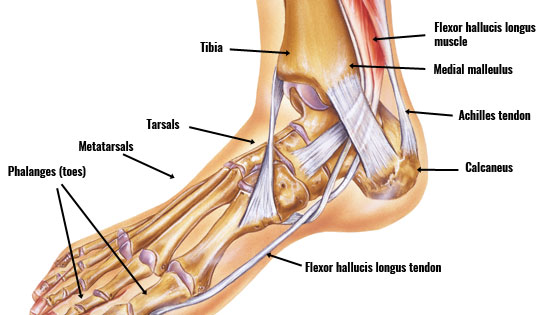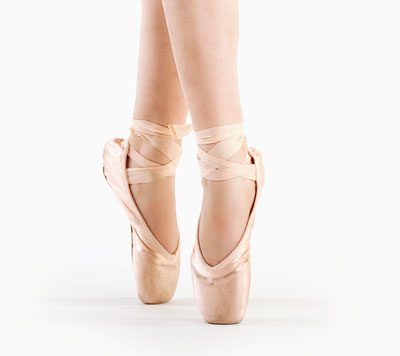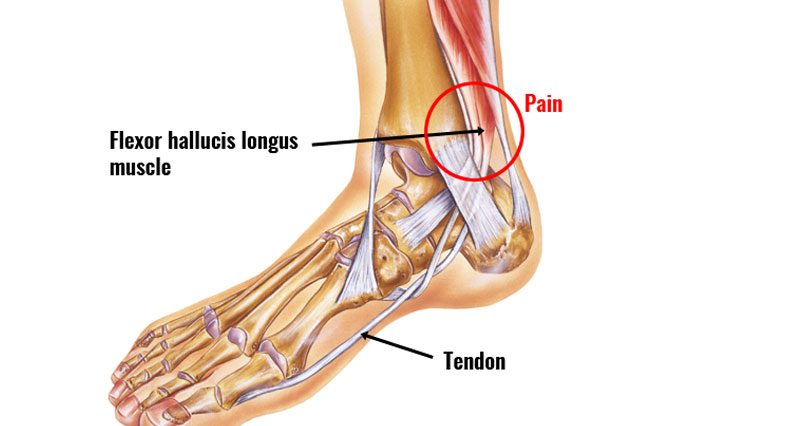Flexor hallucis longus tendinopathy is an overuse injury causing pain on the inside of the ankle.
Flexor hallucis longus tendinopathy symptoms
Symptoms include:
- Pain on the inside of the ankle.
- In particular, pain when weight bearing on your forefoot, and especially toes such as a ballet dancer might do.
Assessment tests
A professional therapist may get you to curl your big toe against resistance (resisted to flexion). If this reproduces symptoms then the test is positive.
You may also show signs of ‘triggering’ of your big toe when you go up onto the forefoot, and again when going down from this position. Triggering is when the toe involuntarily curls up on its own. You may also hear a snap or pop in the ankle when this happens.
Causes & anatomy

The flexor hallucis longus tendon runs down the inside of the ankle, under the foot, and attaches to the big toe. When the flexor hallucis muscle contracts, it causes the big toe to curl up (flexes the toe). Hallucis means big toe in Latin.
Flexor hallucis longus tendinopathy or flexor tendonitis is inflammation or more likely degeneration of the flexor tendons in the foot. It causes pain on the inside of the ankle, and along the length of the tendon as it passes around the back of the medial malleolus and into the arch of the foot.
What causes flexor hallucis tendinopathy?

Overuse is the most likely cause. It is more common in ballet dancers and they have to repeatedly go from a flat-footed position up onto their toes. This movement is known as plantar flexion.
Flexor hallucis longus tendinopathy may also follow a previous tear or strain to the tendon which has not healed properly.








